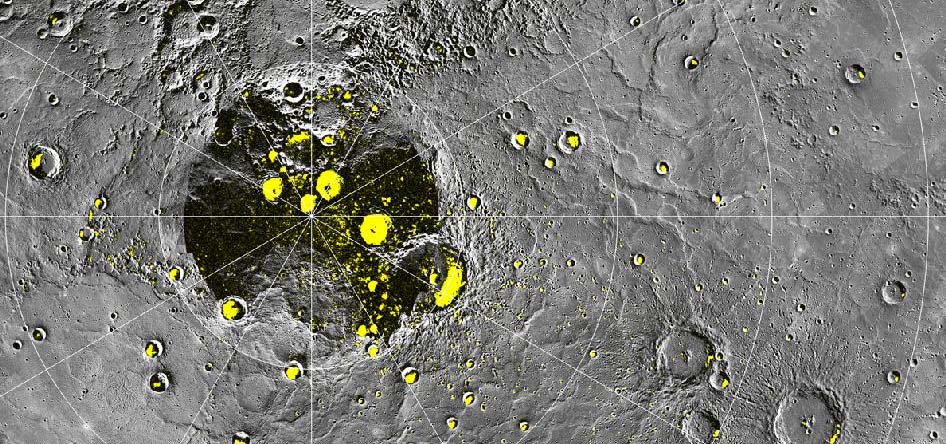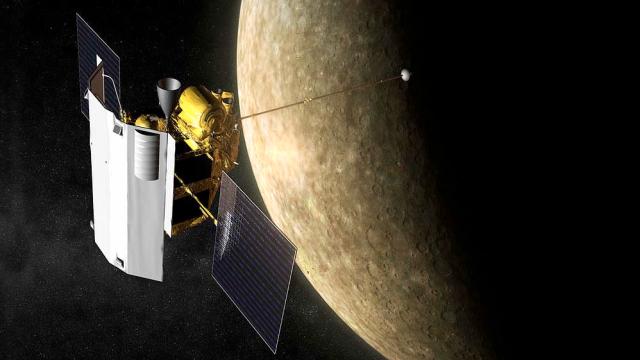Messenger’s fate was sealed from the beginning: When it ran out of fuel, the space probe would crash into Mercury, the planet it was sent to observe. What we didn’t expect is Messenger to last four years instead of one. After an unexpectedly long and fruitful mission, Messenger met its inevitable end today.
It’s a sad day for those of us who gets irrationally attached to inanimate spacecraft, but it’s also good day to reflect on what this little probe has meant for space exploration. Messenger — short for MErcury Surface, Space ENvironment, GEochemistry and Ranging — was the first probe to ever orbit the closest planet to the sun. It was a difficult journey, but it brought back some pretty important discoveries.
So let’s take a moment to remember Messenger, shall we?
Messenger’s long spiralling route
Messenger launched from Earth in 2004, but it spent its first seven years just getting to Mercury. The route, which added up to 7.9 billion kilometres, was a purposely circuitous one. Why not a straight shot? To slow down enough to slide into Mercury’s orbit and counteract the sun’s strong gravitational pull would have taken an enormous amount of fuel. Instead, NASA engineers came up with a spiraling path that used the Earth, Venus, and Mercury’s gravity to get Messenger into position. In more detail, it went past Earth once, Venus twice, and Mercury four times before sliding into orbit. Here’s what it looked like:

It’s hard being so close to the sun
To create a probe that could survive the sun, which shines 11 times brighter on Mercury than on Earth, engineers had to come up with novel solutions. For example, Messenger had a parasol made of ceramic cloth. Temperatures could reach 700 F on one side of the cloth, and it would be only room temperature on the other. But it also meant Messenger couldn’t fly too close to Mercury, or heat radiating up from the planet would damage the probe’s underbelly.
There’s ice!

Ice on Mercury had been long suspected but never confirmed until Messenger came along. The probe took photos of the dark craters at the poles, which are so deep that parts of their interiors never see the light of day. It’s cold enough for solid ice. The discovery also confirmed that water is not as rare in the solar system as we once believed.
An odd magnetic field
Like Earth and unlike many other planets, Mercury has a magnetic field, but it’s seriously askew. It is a lot stronger in the north than in the south. For now, we still don’t know why.
Mercury shrank
Mercury is unusual in that its iron core makes up a full 60 per cent of its mass. As its core has cooled and shrunk, the whole planet has shriveled with it. Messenger found wrinkles — huge cliffs, really — that dominate the surface of the planet, evidence of the planet’s changing size.

More generally, Messenger gave us the most complete view of Mercury’s surface. We now have its whole globe mapped, but we also have close-ups of the surface that show lava flows and craters in detail. In its final days and hours, as it flew closer to the planet than ever, Messenger was sending back remarkable new images. In total, the probe has sent back 255,000 images to Earth over its lifetime.
Now that Messenger has crashed, it has left yet another crater, relatively small, on the pockmarked surface of Mercury — the only sign that we were ever there.
Pictures: JHU/APL
